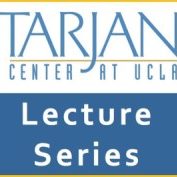[Banner Caption: Professor Clark has been influenced in her work by her experiences with her son, Heber. Together, they selected the images above to represent aspects of Heber’s quality of life.]
Professor Lauren Clark, the Shapiro Family Endowed Chair in Developmental Disabilities Studies at the UCLA School of Nursing, has developed a series of tools for addressing the quality of life for people with intellectual and developmental disabilities and their families.
An expert in qualitative research methods, Professor Clark worked with an interdisciplinary team of colleagues and people with intellectual and developmental disabilities to devise a free and accessible health-related quality of life measure specific to the needs of diverse and marginalized people. Designed to be completed by adults with intellectual and developmental disability, not by proxy respondents, the resulting measure, called the HRQoL-IDD-16, contains 16 items with an easily understood visual response format depicted as a gradient of fluid-filled cups (‘‘none’’ to ‘‘full’’) to represent each item’s frequency of experience on a 5-point scale. Clinicians and researchers can use this measure for self-reported quality of life measurement pre- and post-intervention. For more detailed information about this tool, see the recent article in the Journal of Applied Research in Intellectual Disabilities (October 2020).
Professor Clark has also developed a website tool to assist prospective parents in understanding quality of life implications of raising a child with disability. A series of 11 videos developed through research with parents and grandparents of children with disability is compiled in Rescuing Hope: A Parents’ Sense-Making Journey, describing parents’ experiences after hearing their child’s diagnosis with a developmental disability like Down syndrome or Spina Bifida. Each video in this project uses the experiences and words of families of children with Down syndrome to represent a key moment in the process of Rescuing Hope. It starts with the moment of their child’s diagnosis, continues through the next months of learning, connecting with others, and planning for the future. The last video is about belonging to a community of people with differences and disabilities.



